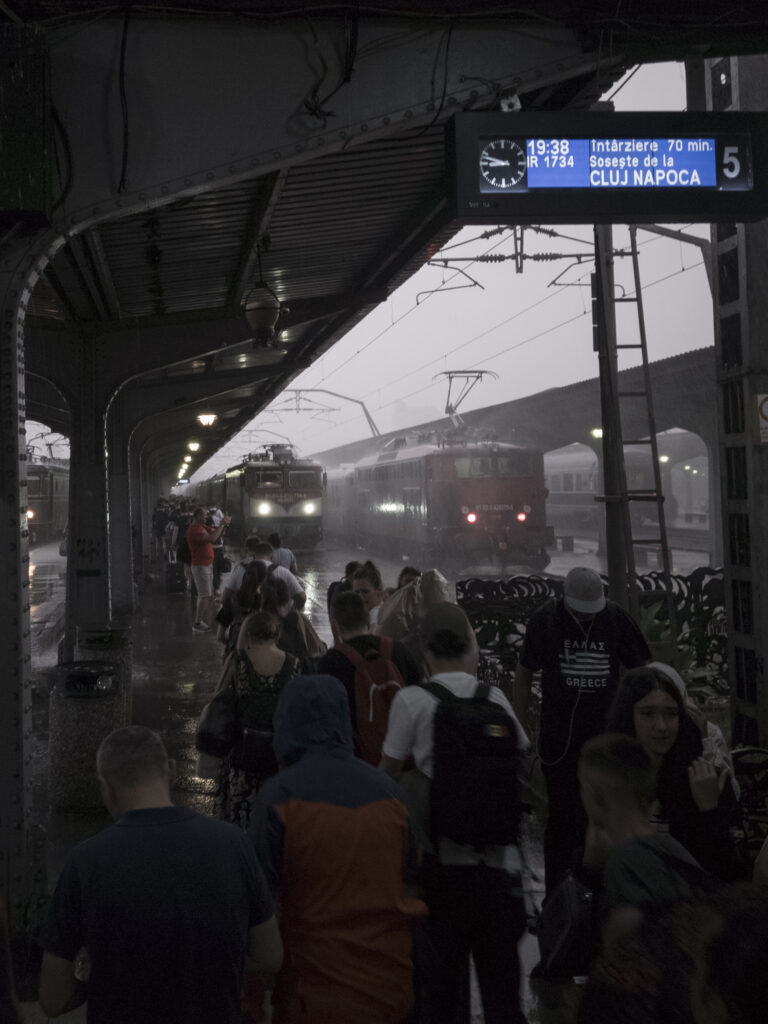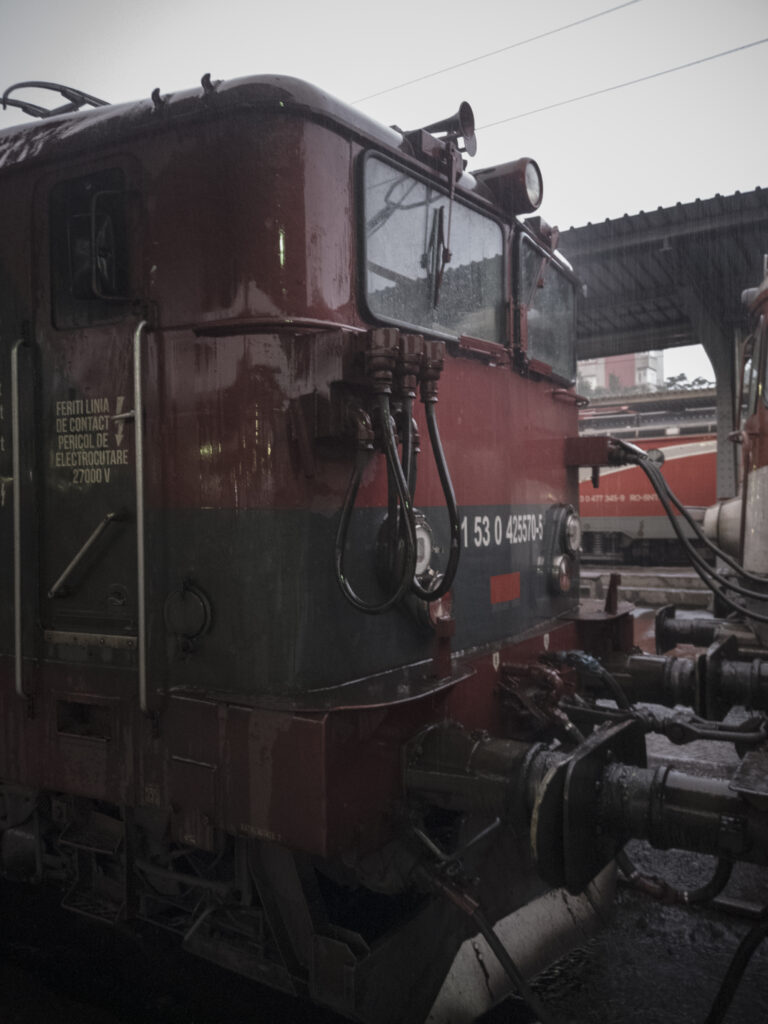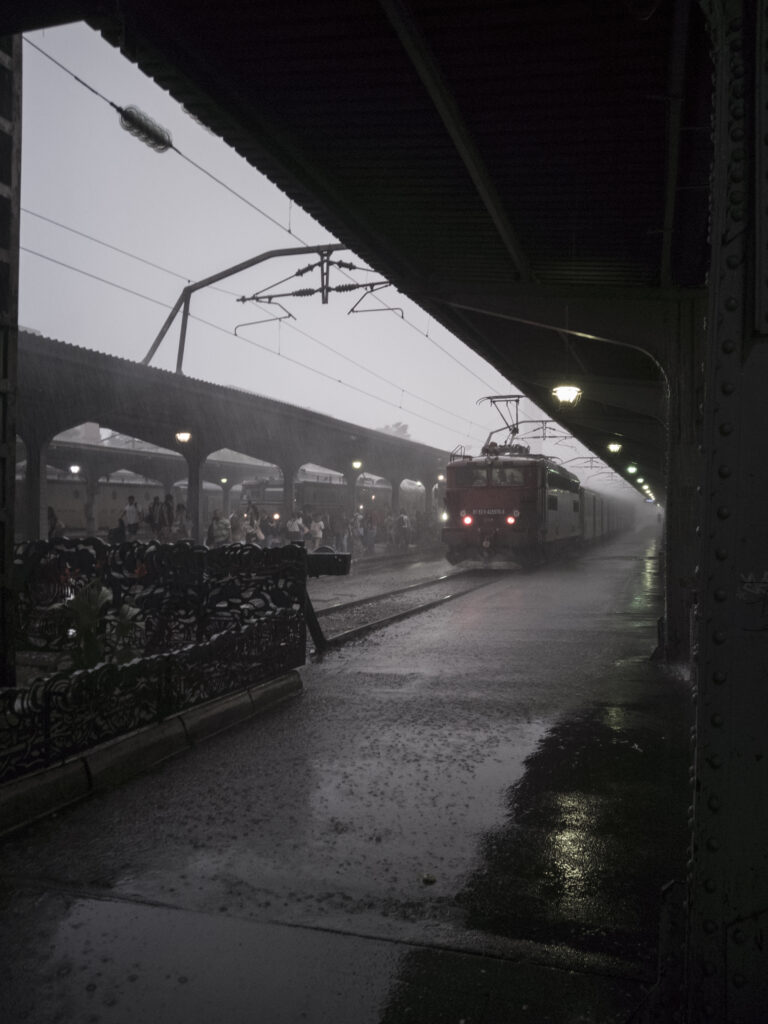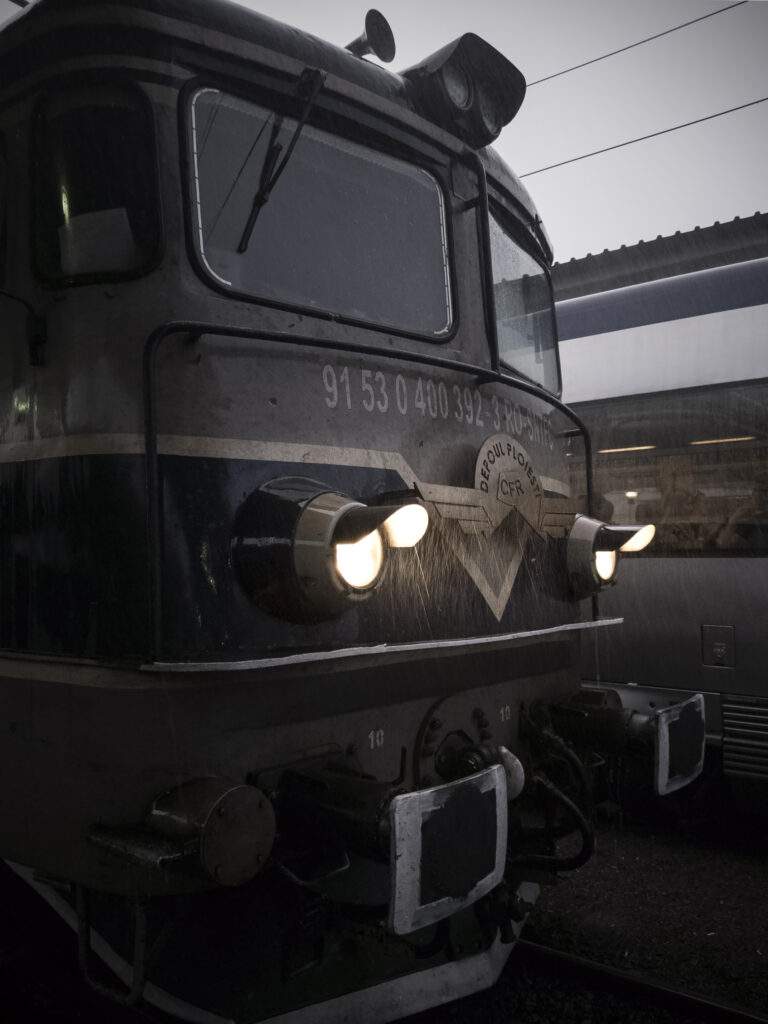Let me tell you an unexpected and memorable sensory experience I had this summer while staying for 2 days in Bucharest.
I landed for the first time in Romania a bit after midnight on the 4th of july. My friend would be joining me the next evening, flying in from Lyon for our journey towards Athens. I waited until sunrise and since I had my bike with me, I decided to take a ride to central Bucharest, about 25km away. The ride ended up taking a chill 6.5 hours, thanks to a blown rear tube amongst other things, and visit to the Stalinist style Casa Presei Libere (sic) and Ceaușescu mansion.
One thing I needed to see in Bucharest was the main train station, a landmark I typically go see. Coming in, I knew nothing about the romanian rail network, its history, rolling stock or even how many and where the stations were. Turns out there is only one ‘main’ station in Bucharest, which is surprising for capital with about 1.8M people. It is called Gara București Nord, located slightly north-west off the center on the circular Metro M1 line, serving also as end-station for the M4 line going to the North-West suburbs.
The station was initially built in 1868, with the current front building created in 1938. Interestingly, for being the main hub of a capital, it is a terminal station, and serves the vast majority of routes in and out of Bucharest.
The whole day was very hot with not many clouds, so come check-in time, I dropped my things at the hotel near Stefan cel Mare, took a much needed shower and slept a bit for the first time in about 38h. Around 6pm, it was time to go back out and see what the city and station had in store. After a quick M1 ride, I finally emerged at Gara de Nord, and was in for a change of scenery!
The station gets put to the test…
Getting into the entrance hall with the ticket counters, small shops, information boards and fast foods from the underground station, things took an unexpected turn. In those short 15 minutes it took to ride to the station, the heavily hot atmostphere had dissapeared, leaving place to a massive downpour. All of a sudden, nature began pounding the plexiglass roof of the station with all its might, creating a strong rumble resonating across the hall. What looked like a bright early evening not long ago turned grey and dark.
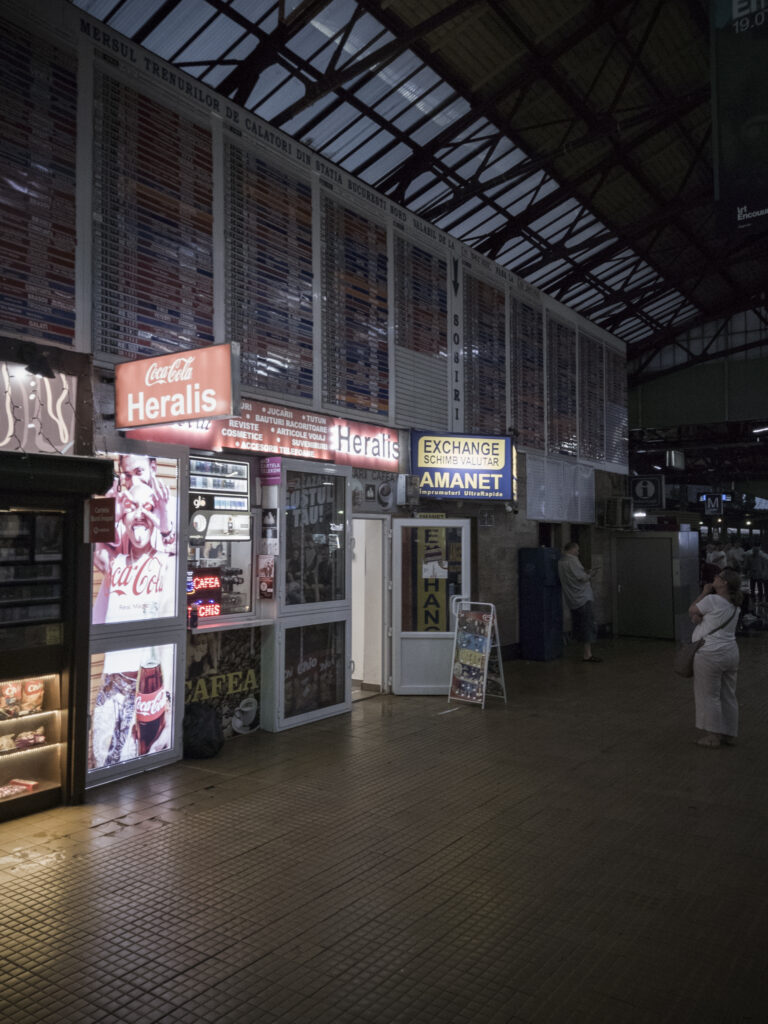
On the platforms, there is almost no place to hide, as we get blasted from all sides as gusts of wind keep hitting the area. Water is pouring up and down from the overwhelmed water pipes like fountains, creating a wet maze for anyone in the platform area.
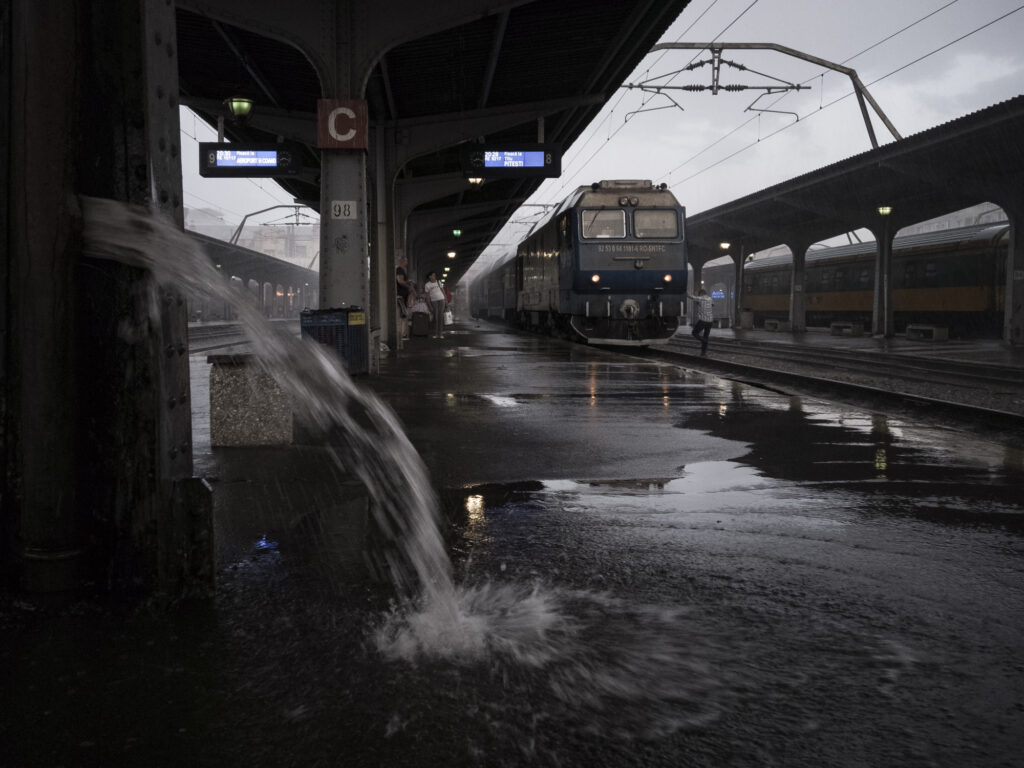
Initially there is just an old diesel with two double decker coaches, and a few other push pull sets, one of which gives a first hint at the rolling stock composition of the Regio Celatori company. On the right side below is an ex-sncf local train X72500 set, still mostly in their blue TER livery. These are trains that I used to ride on in south of france as a kid during summer holidays, thinking they were TGVs when first encounting them, given their very erodynamic nose section.
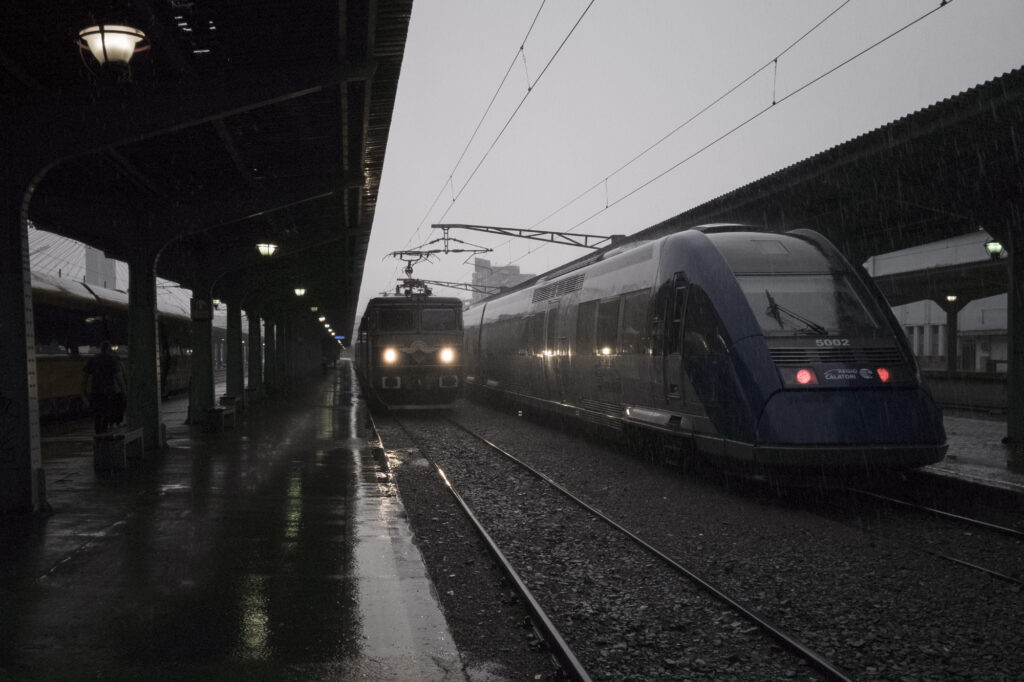
One curious profession seems to be persisting in Romania – wheel tappers. These guys are responsible for checking the integrity of train wheels and axle boxes. They carry long wheel tapping hammers, which they use to hit the wheels, listening to the sound it produces to assess their integrity. They also check the temperature of the axles to identify potentially failed bearings. Together with the dispatchers that still clear the trains with their green signs, the shunters, train drivers and conductors, and other personel, they make sure the operation goes smooth at the station.
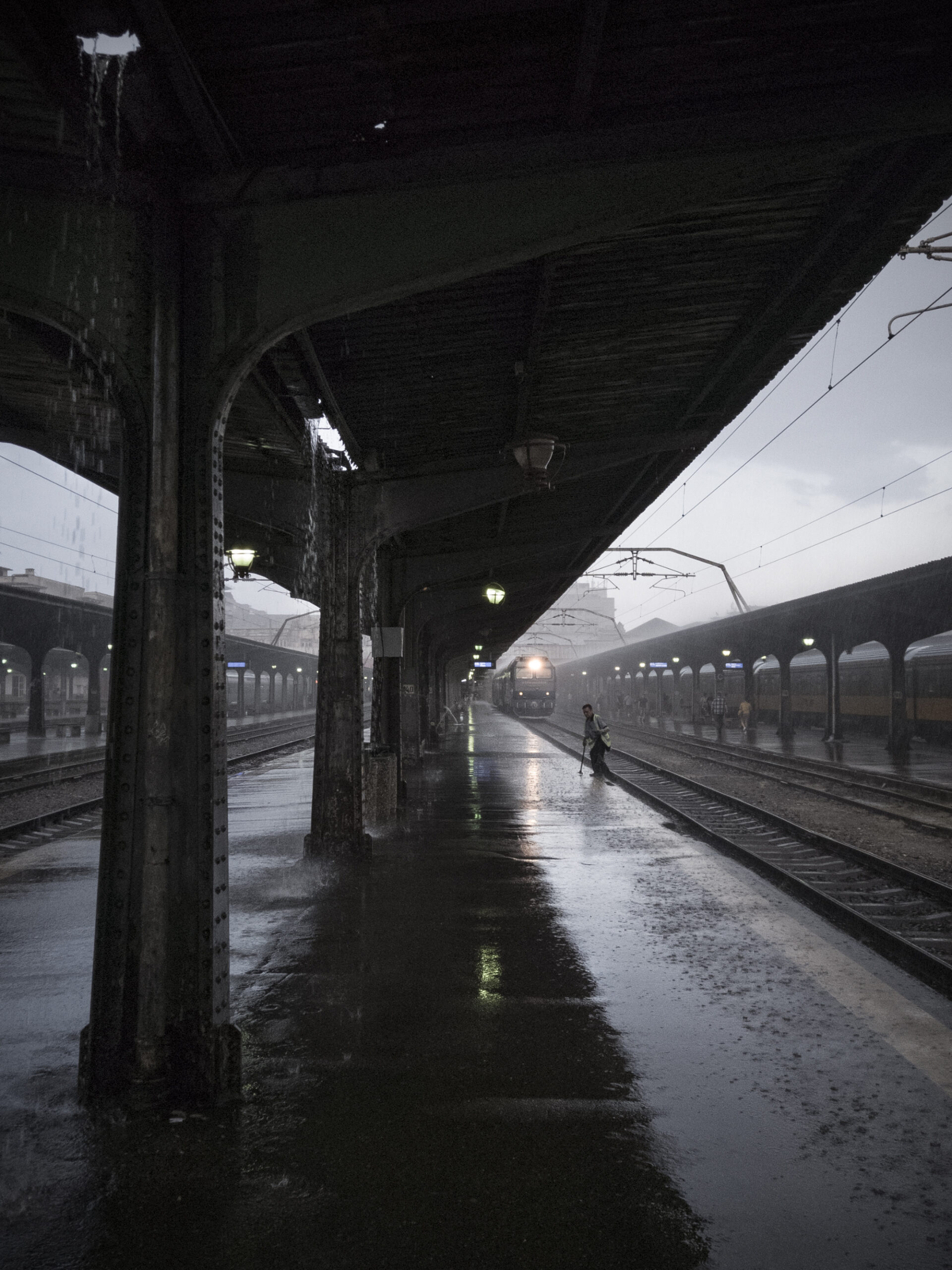
Rush hour – escaping the deluge
A few minutes pass and it appears that evening rush hours has begun – about 6 or 7 different trains arive, mostly relatively old romanian made locomotives with coaches. Despite the number of trains arriving, the platforms quickly clear, as most people are rushing to the main hall to take cover, or waiting for their train to get to the platform.
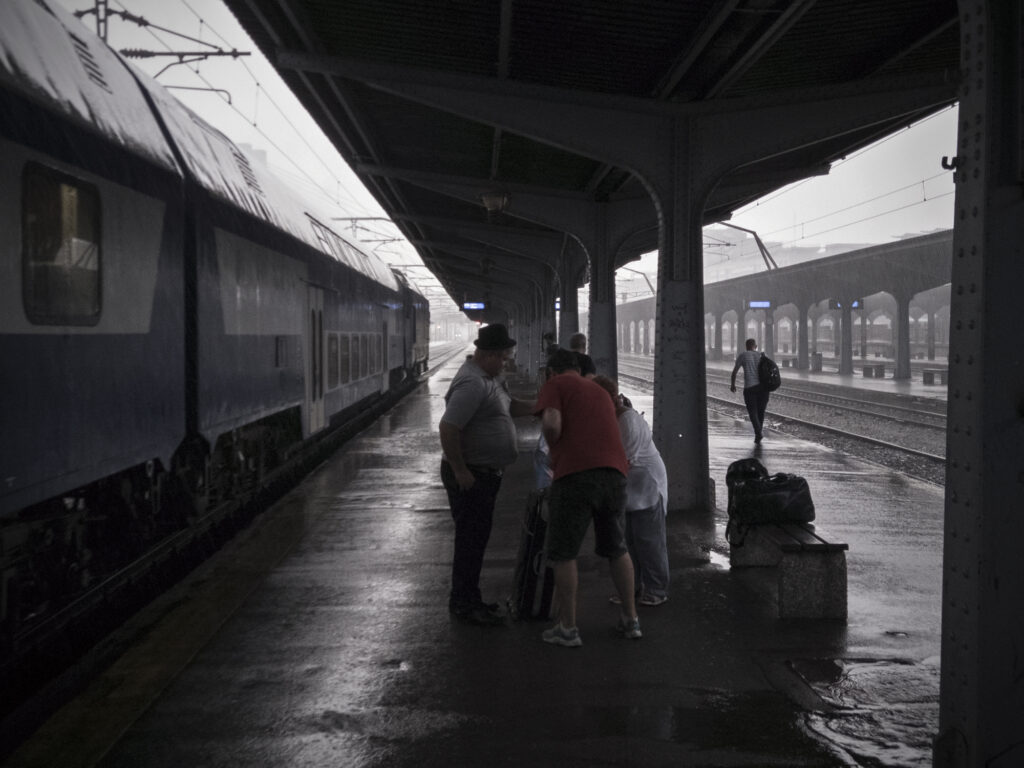
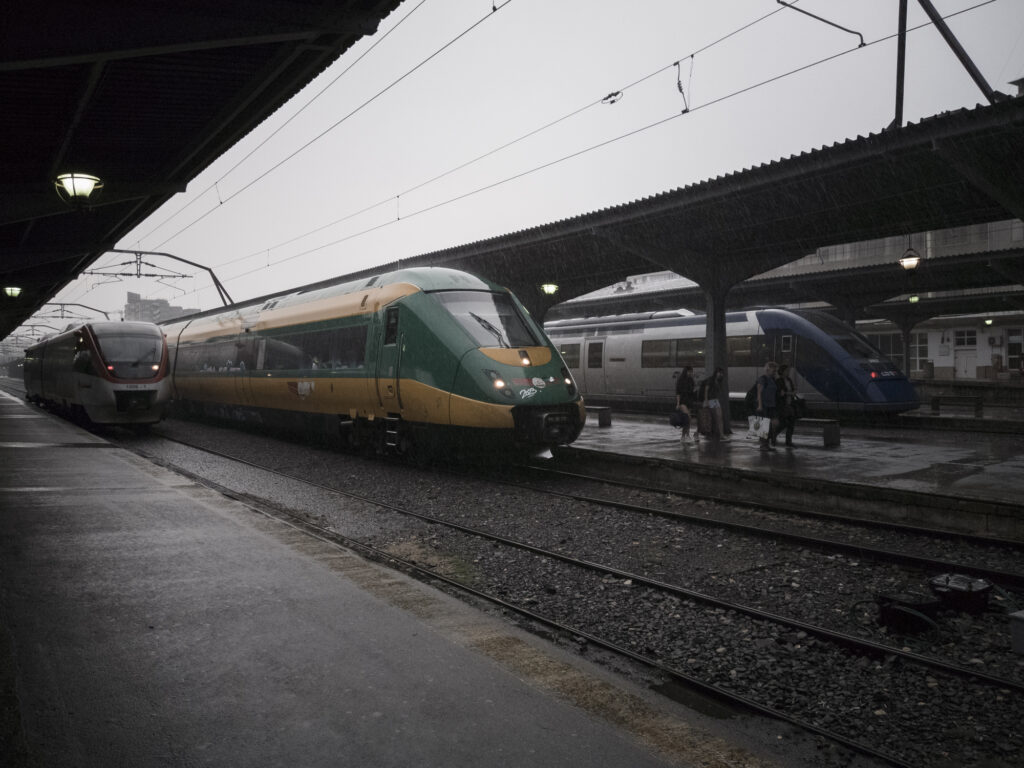
About 20 minutes in, there was one machine that I certainly wasn’t expecting to see – and took me a few moments to recognize – the now retired french BB25500, aka “Danceuse” in Regio Celatori livery! These locomotives were one of the centre pieces of local trains in France until their retirement in 2021, often pulling reversible carriage sets on omnibuses in and around large cities.
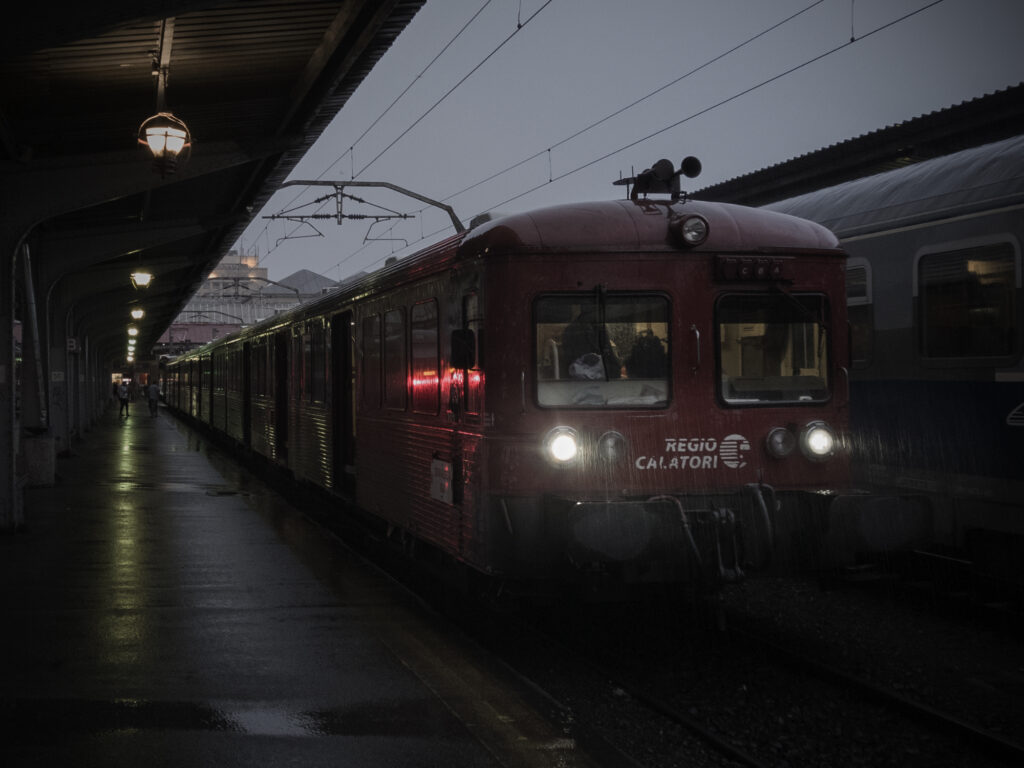
Six-axle romanian work horses
It actually took me a while to realize that most of the intercity and even local train locomotives were six axle. This heavy type of locomotive has all but dissapeared in western and central europe in passenger service since the advent of advanced electronically controled traction amongst other things. The two Electroputere LE 5100 (class-41) below are certainly a solid feat of engineering, being able to pull trains more than 30, but often 50-60 years after rolling off the assembly line, as they were built from 1965-1991.
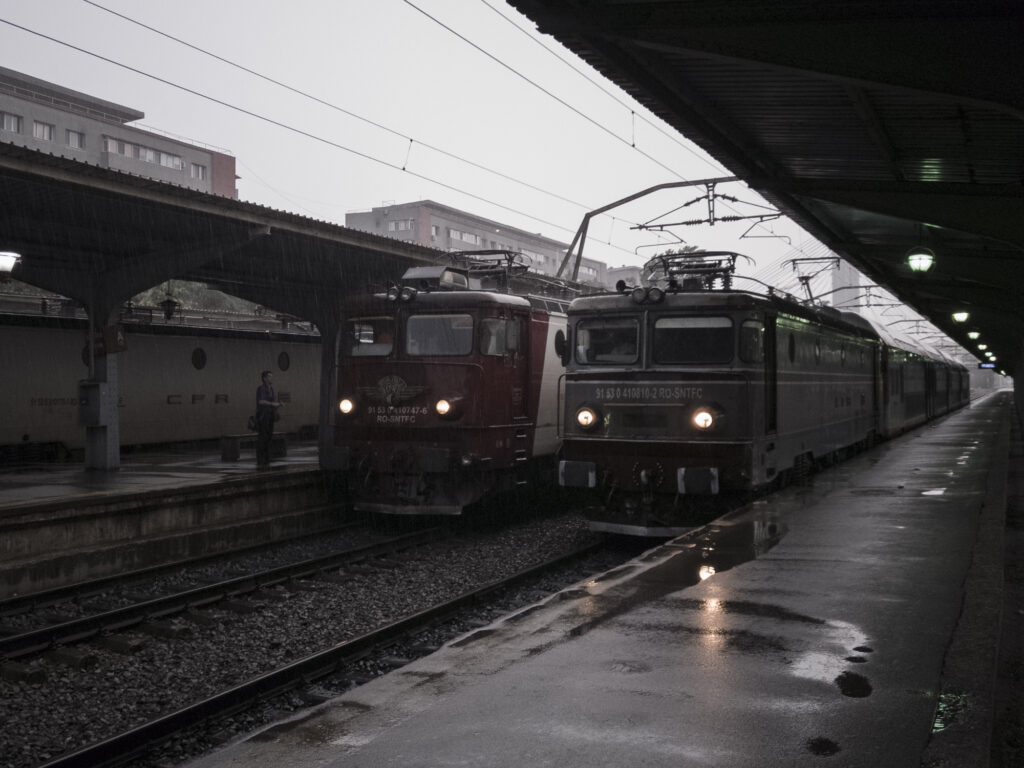
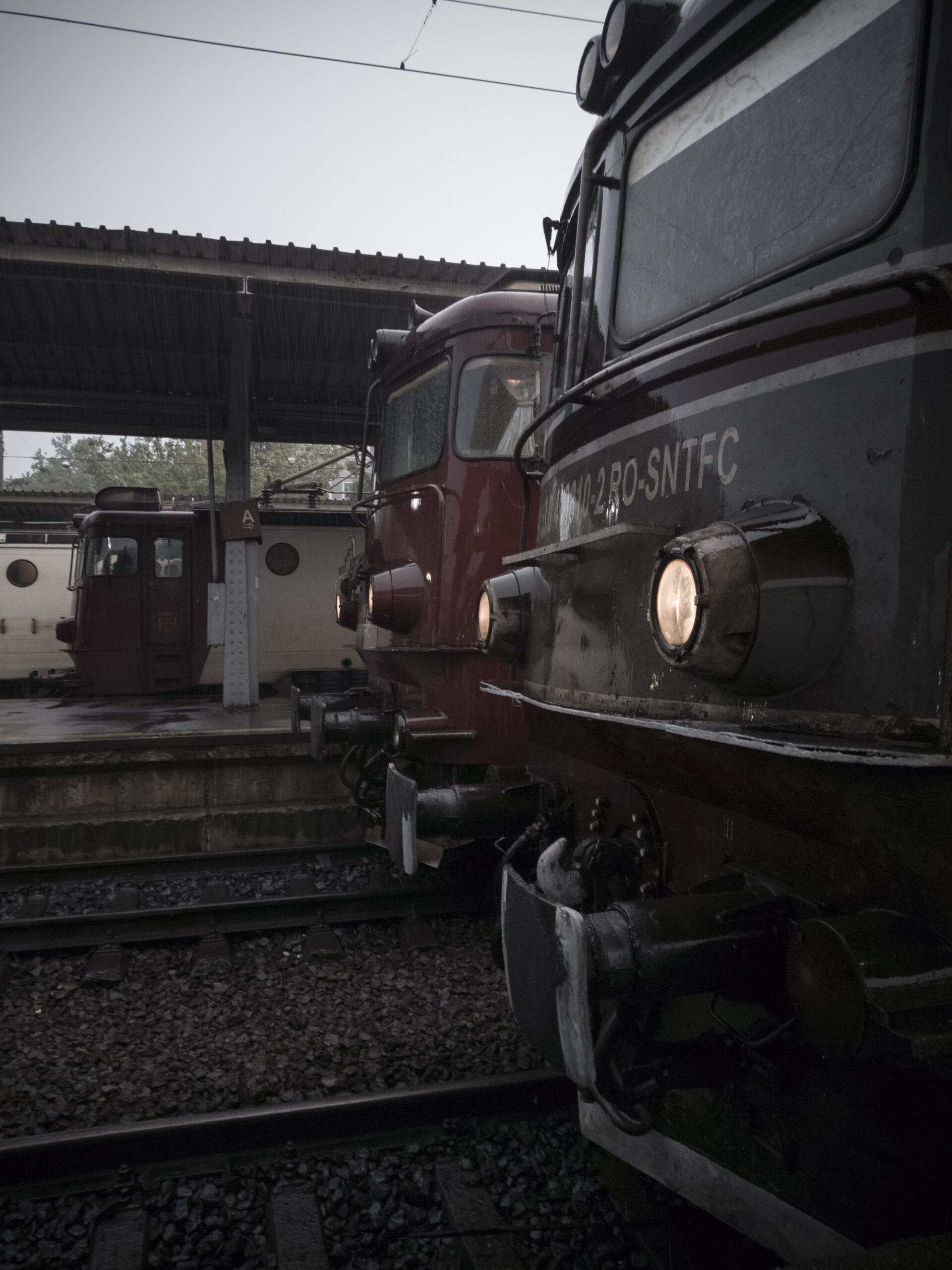
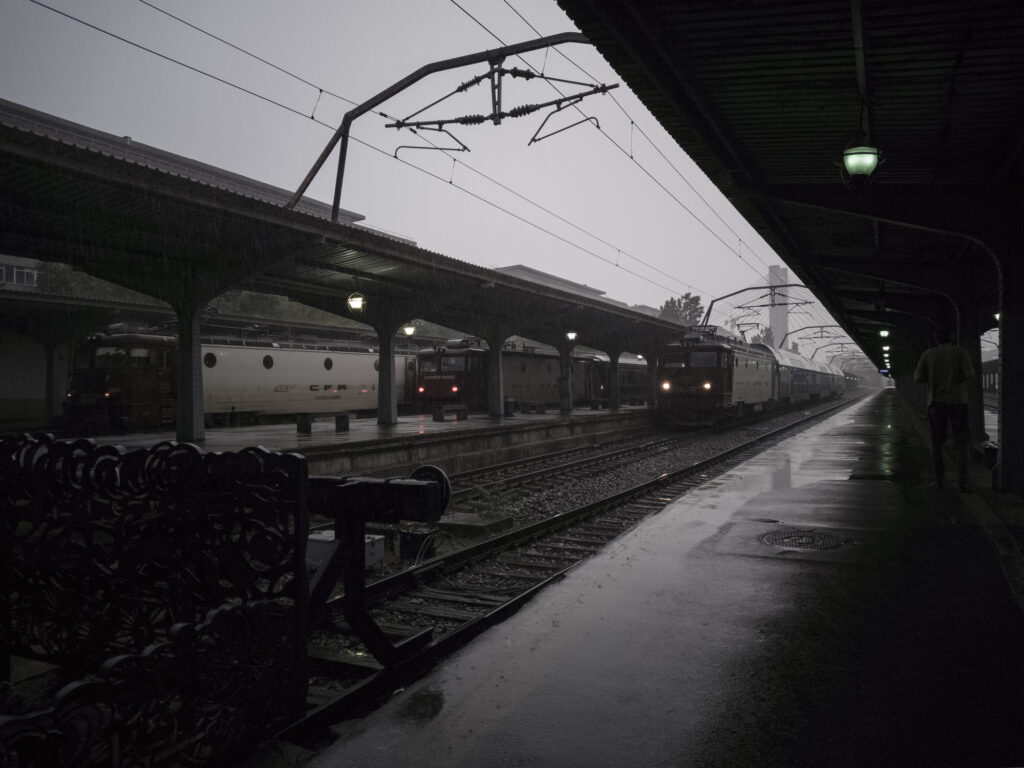
The rain nor the trains are slowing down, I am slowly and surely getting drenched and having a blast.
Water has a sneaky tendency to make its way where it is not invited, and this storm certainly showed the state of the ageing infrastructure of the station. The leaks were virtually everywhere – platform roof panels rusted out, evacuation systems directed to the middle of the latforms, seemingly sealed tracks accumulating water puddles.
On another note, it appears that some of the trains run with open doors, adding to the curiousity that this place is. This was confirmed when we took the express train to Constanta the next day, where the train consistently departed with its doors open, only to close them a few seconds into the ride. It proved to be invaluable though, given the lack of air conditioning or opening windows in our coach. I also imagine it gives people the ability to jump on the train even after it already started rolling.
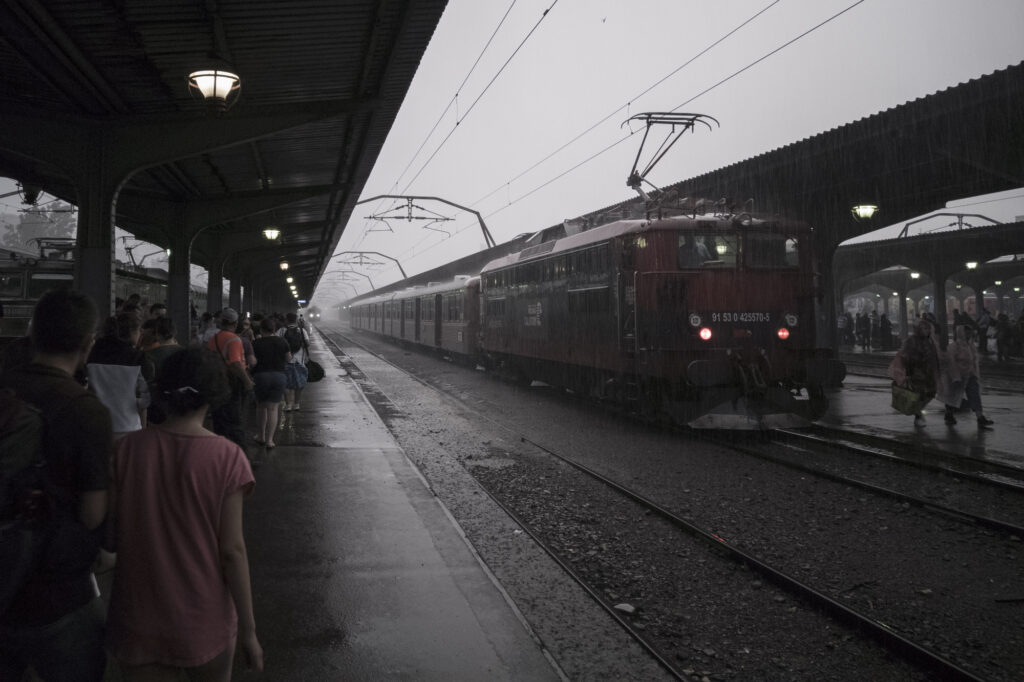
The rain storm ended up dissipating about an hour later, leaving behind some fresh looking, contrasting dark clouds in the setting sun shortly after 9pm.
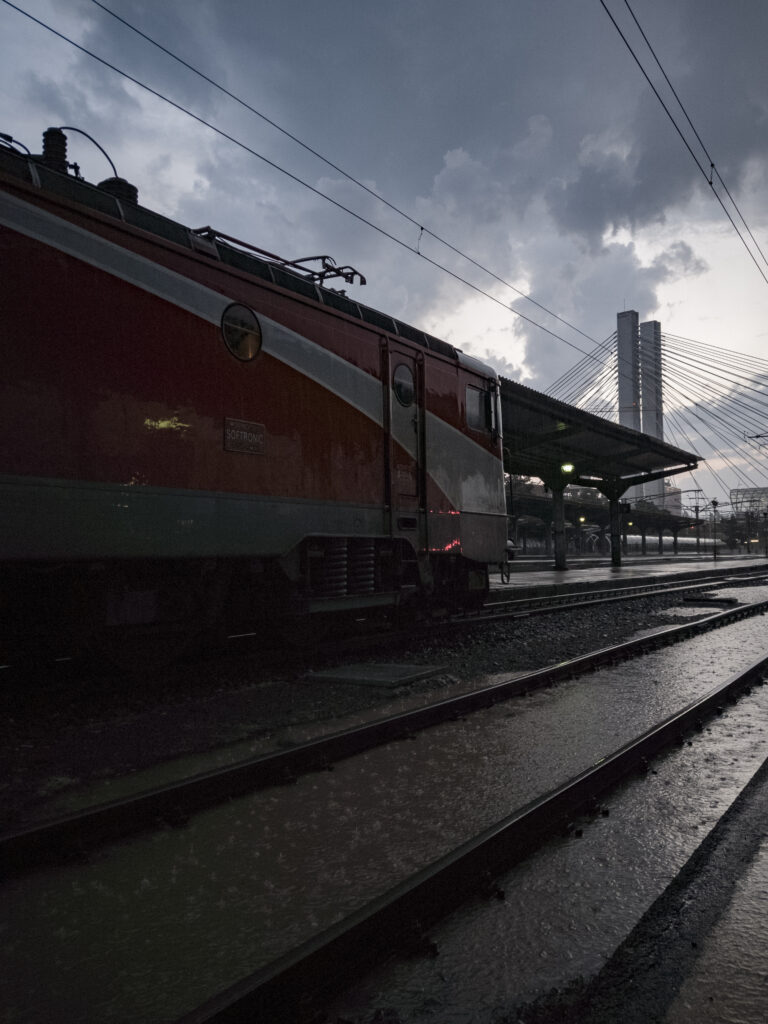
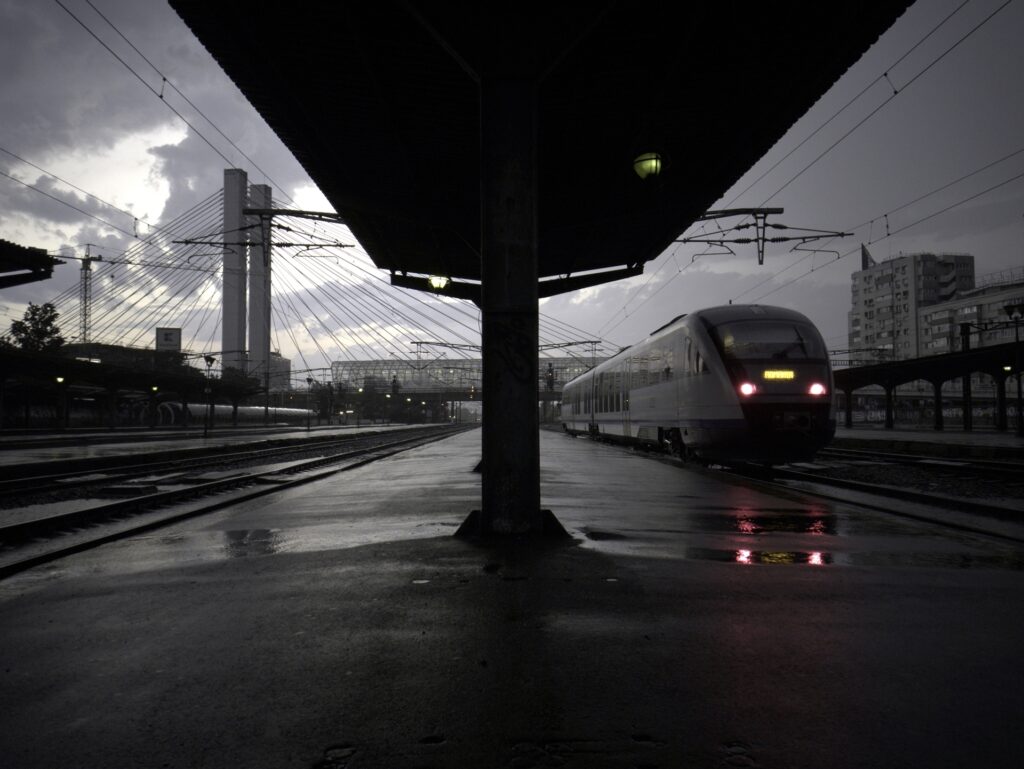
With the air refreshed, a wet t-shirt and a calm station, it was time to get moving.
Complimentary thrills in the underground
Since I was at Gara de Nord, I couldn’t resist taking a ride on the M4 line, which together with the M3 line still has the old romanian-made Astra IVA rolling stock. It was certainly worth the trip. The cars are fully covered in graffiti front to end, even on the inside. It feels dark, the seats are made of fiber glass, and have been repainted red multiple time which gives them a deep patina. The trains are also very loud, especially in the occasional steep turns that make the wheels screech through the open windows. There is some odd feeling of doom created by the obstructed view to the outside. Entering the metro while not knowing who is inside doesn’t help either, especially in the dimly lit neon underground.
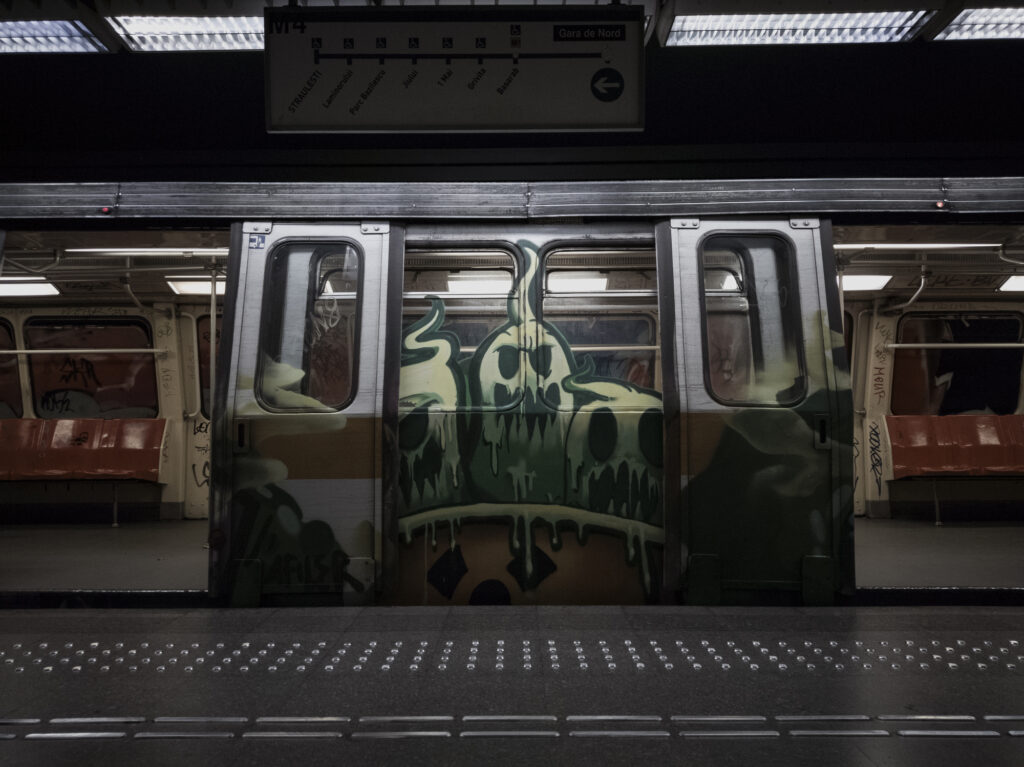
The Bucharest metro would deserve a post in and of itself, but we’ll leave it here for today. After riding the almost empty and eerie M4 line for a bit, I ended up going back to Gara de Nord and got out of the metro, in the dark, through one of the creepiest entrances with no lights inside or outside, on the back of the station.
Til next time!
Philippe
